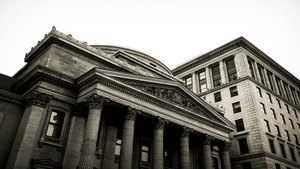S&P 500: 2.58% DOW: 1.25% NASDAQ: 3.25% 10-YR: 3.77%

Last Week on WallStreet - June 17th, 2023
What Happened?
Markets faced a deluge of data this week, with an FOMC meeting, CPI report, retail sales figures, and consumer sentiment readings all hitting Wall Street within a span of four sessions. How did investors handle that influx of data? In line with the trend witnessed this year, markets roared, propelling the S&P 500 to its fifth consecutive week of gains. Thursday's standout performance in stocks was driven by positive retail sales figures, which injected economic optimism into the market following the Federal Reserve meeting the day before. However, it's important to acknowledge that the fixed income markets are painting a different picture of the future. Bond investors appear more cautious, indicating a divergence in market sentiment. Only time will reveal which market ultimately wins in this ongoing debate.
Beneath the surface, all sectors of the S&P besides Energy (-0.6%) participated in this week's gains. Continuing its year-to-date dominance, Technology (4.3%) stormed higher on additional AI optimism and consumer strength. That consumer resiliency also accelerated Materials (3.5%) and Discretionary (3.2%) stocks deep into positive territory.
Fed Holds Off on Rate Hike, But Says Two More Are Coming Later This Year
- After a two-day meeting, the Federal Reserve decided to leave interest rates unchanged at 5% - 5.25%
- The decision to pause was unanimous
- The Fed's Dot Plot moved decidedly upward, pushing the median member expectation to a funds rate of 5.6% by the end of 2023
- A funds rate of that level indicates two additional 25 basis point hikes to come this year, based on these expectations
The key takeaway - After implementing ten consecutive rate hikes, the Federal Reserve delivered market participants a "hawkish" pause during their recent FOMC meeting. Although the pause itself was widely anticipated, the updated FOMC member Dot Plot elevating rate expectations caught markets somewhat off guard. Half of the committee expecting two additional rate cuts this year contradicts what markets currently have priced in and a repricing to reflect those higher rates would likely have downward implications for asset values. Investors will now have a dilemma: trust the FOMC member expectations, or diverge to develop their own expected path for interest rates. Nonetheless, it is important to note that the Federal Reserve remains reliant on data and will utilize this pause to gather further information about the state of the economy and inflation at this stage of the hiking cycle.
US Consumer Price Increases Slow; Underlying Inflation Sticky
- The headline CPI increased 0.1% last month after gaining 0.4% in April
- Year-over-year inflation rose 4.0%, the smallest increase since March 2021
- Energy prices dropped drastically during the month moderating the headline figure
- Core CPI, which removes food and energy costs, rose 0.4%
- The cost of services rose 0.3% after gaining 0.2%
The key takeaway - While inflation is gradually moderating from the high levels witnessed last year, the objective of bringing it back to the long-term 2% target is still a work in progress. Core inflation, a measure closely watched by markets for long-term inflation trends, increased last month and remains above 5%. The persistence of elevated inflation can be primarily attributed to resilient consumer spending and a robust labor market, which make it unlikely for a rapid return to the Federal Reserve's target. As a result, the question of how much economic damage would be necessary to facilitate that downward move becomes increasingly important to both consumers and investors.
Retail Sales Rise Again, Pointing to Resilience of the US Economy
- Sales at retailers rose 0.3% in May despite expectations of a 0.2% drop
- Sales of new vehicles and auto parts, an up-and-down category, rose 1.4% last month
- Receipts at gas stations, on the other hand, fell 2.6%, largely because of lower prices
- Bars and restaurants, the only service sector in the report, increased a solid 0.4%
The key takeaway - Over the past year, retail sales have decelerated from the hot market following the pandemic. Despite this deceleration, spending at retail businesses continues to grow and, when combined with other consumer spending data, paints an incredibly resilient consumer picture. That's a bullish factor for the economy and adds to the data pushing back recession calls for this year. On the other hand, that growth and resilience in spending is likely to keep inflation stubbornly elevated and force the Federal Reserve's hand towards further hawkish action.

From the Waterloo Watercooler
The EU wants to break up Google’s ad tech business, slapping the company with a formal antitrust complaint yesterday and accusing it of abusing its position.
Virgin Galactic said it would begin its commercial space tourism service by the end of the month. It’s been a long time coming
Activision Blizzard revealed its newly released Diablo IV game becoming the fastest-selling ever for its Blizzard subsidiary at $666 Million in just 5 days
Novak Djokovic claimed his 23rd major title at the French Open, breaking a tie with Rafael Nadal for the most majors won in men’s tennis



